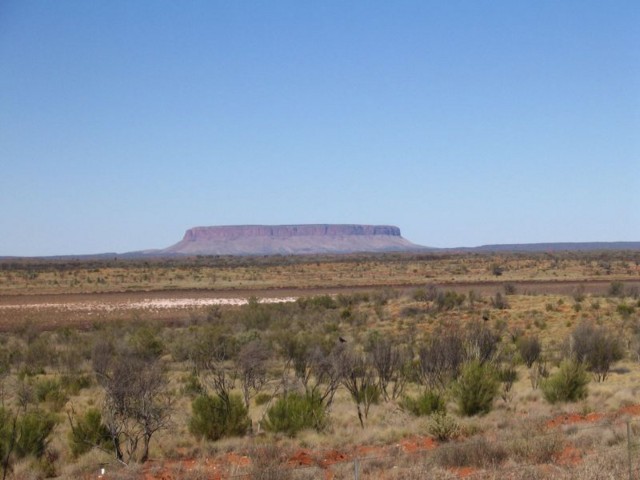
The world's largest toothbrush.
We were for six days in the desert. The first two were in Kata Tjuta National Park. They have an entire web page devoted to them. Here are some of the sights of the other four days:

The world's largest toothbrush.
Also known as the place where you can fool tourists to think they're seeing Uluru.
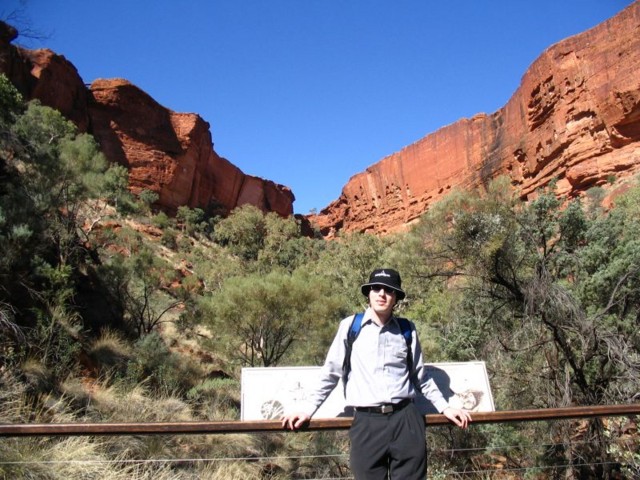
King's Canyon.
Yet another sacred area for a local Aborigine tribe, and also a good place to hunt for kangaroos. (They come to drink at the waterhole at the end of the canyon, and when they're going out, you can pop a boomerang at the last one going without the others noticing.)
One interesting thing about all these red rocks lying about is that none of them contain any iron. The red color is an iron oxide that exists in the dust traveling in the wind. When it hits a rock, it gets chemically fixed to the rock by the biological intervention of lichens living on the rock. If you even scratch one of these rocks (they're a soft sandstone) you'll see that the rock below is pearl white.
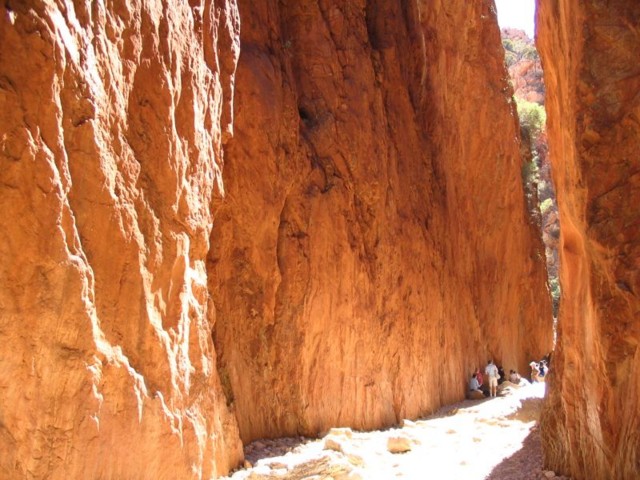


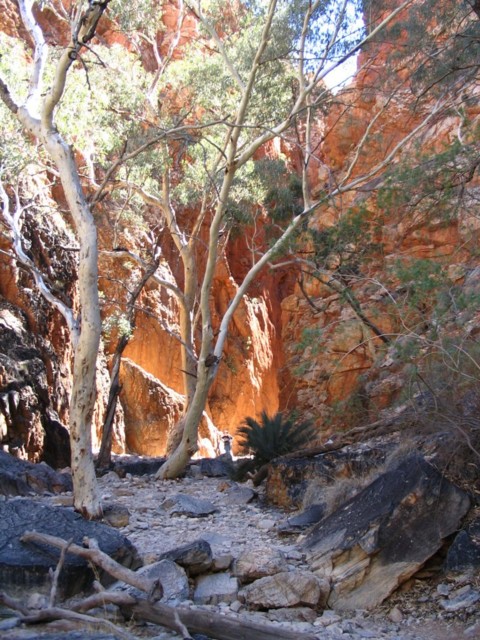
Stanley's Chasm
I look at this, and I think "an Aussie Petra". Don't you?

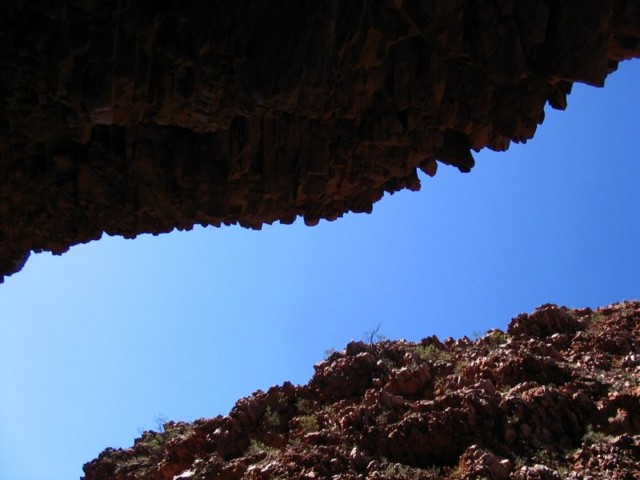
Simpson's Gap
The erosion creating this gap was made by lichen, microscopic life-forms. Despite the appearance of water, this is not water erosion. The water, by the way, is a flowing river after a rainfall. (That's the reason for the "No Swimming" sign shown on the Alice page.
Another interesting thing to note is that the sand on the floor of the canyon is nothing like what you expect desert sand to be. It's coarse, grainy, white -- it is beach sand.
Further down the "stream" we saw several eucalyptus trees, whose trunks have swollen to enormous size, in order to keep the water, when there is water to keep.